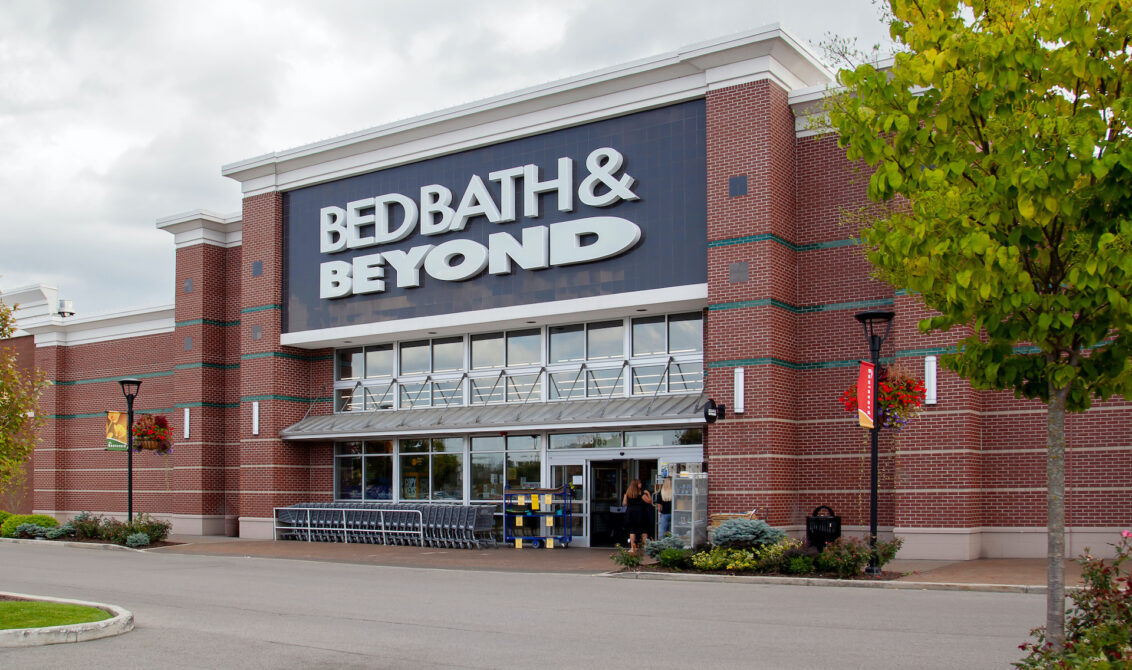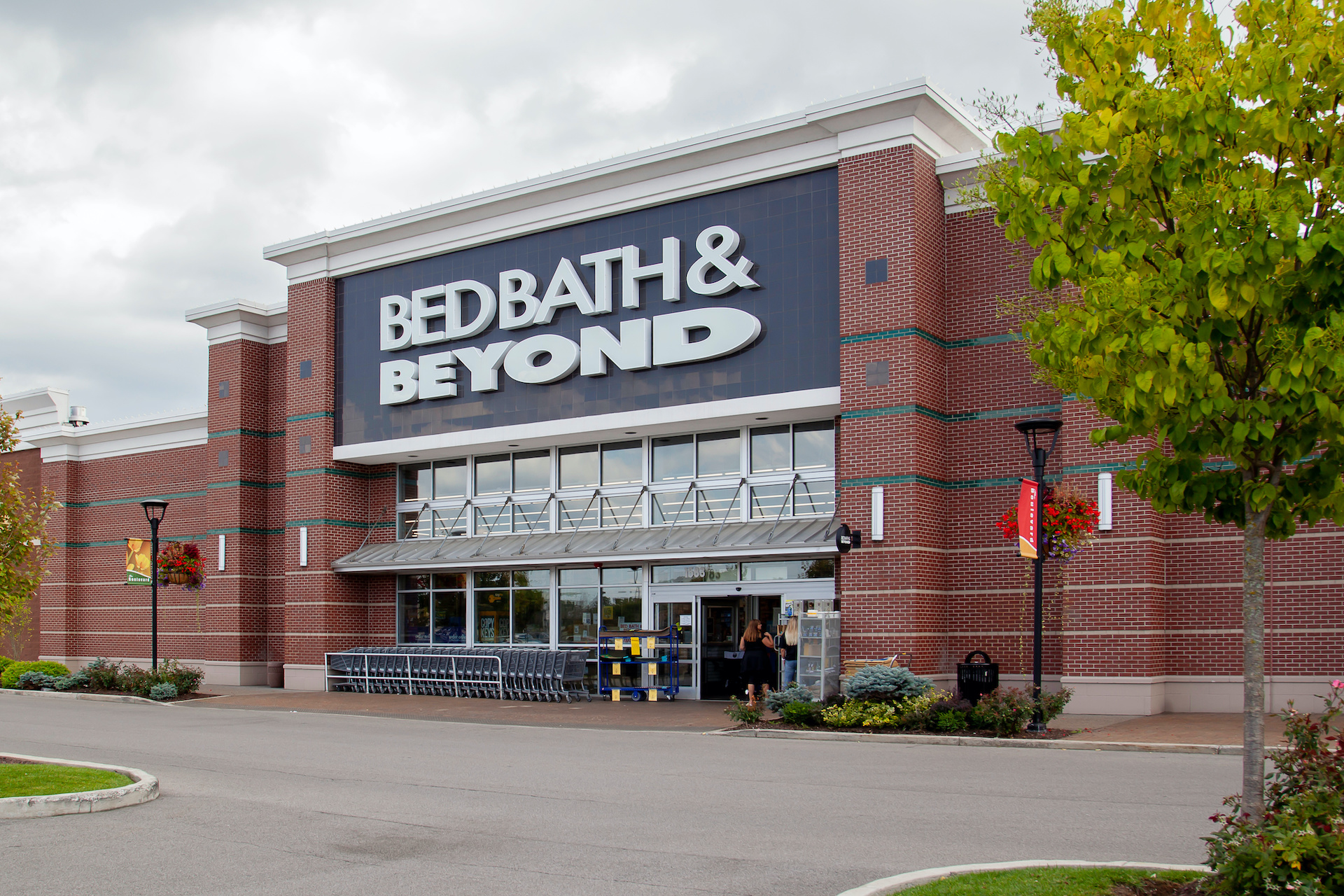Latest Update: April 23, 2023 – Bed Bath & Beyond Inc. filed for bankruptcy protection on Sunday to wind down its business after years of losses and failed turnaround plans left the once-powerful retailer short of cash.
Bed Bath & Beyond’s downfall serves as a cautionary tale for retailers who focus solely on cost efficiency at the expense of customer service. Bed Bath & Beyond was once loved by its customers, who would purposefully drive long distances to explore the latest product gems and surprises just waiting for them around every carefully merchandised corner.

Bed Bath & Beyond store managers would provide curated shopping lists and personalized shopping tours showing customers and their loved ones the best products to purchase for college send-offs (the BB&B send-off for college was its equivalent of Starbucks’ first day of Christmas holiday season red cup), new homes, even wedding registries. With their famous -20% coupon (a loyal customer’s badge of honor), shoppers would spend hundreds of dollars per visit.
As a retailer, Bed Bath & Beyond “owned” a small (but lucrative) part of one of the most emotional moments any family can experience. That ended when the company decided a few years back that it could win a competition against Walmart and Target by doubling down on cost efficiency. Customers could already feel the results of this pivot before the pandemic, but 2020-2022 made everything worse.
“The expansion of the private label offer was essentially turned back afterward, but the corrective measures came too late.”
Just-in-time delivery systems made for empty shelves in stores. Some shelves continued to be well stocked, but those holding the private label products customers did not care about. The expansion of the private label offer was essentially turned back afterward, but the corrective measures came too late. The company that once was a treasure hunt store suddenly offered a very different emotional experience… one of dread and sorrow for a store that no longer had the pulse of its clients.
Bed Bath & Beyond Missed the E-Commerce Boat
One specific aspect of customer service pertains to making products available online conveniently. It’s not the pandemic that made American customers order online, but it did accelerate the trend and made the company’s underinvestment in e-commerce more problematic.
Founders of Bed Bath & Beyond, Warren Eisenberg and Leonard Feinstein, admitted in an interview with The Wall Street Journal that they wrongly assessed how important e-commerce would become to their category. “If you told me that some of my grandchildren will get all their dresses on the internet, I would say, ‘People like to go out and shop. It’s a social thing to do,’” Eisenberg confessed candidly.
“Founders of Bed Bath & Beyond, Warren Eisenberg and Leonard Feinstein, admitted in an interview with The Wall Street Journal that they wrongly assessed how important e-commerce would become to their category.”
So the halfhearted attempt at e-commerce left the company with a website with poor UX, an inept customer journey mapping with little room for personalization, and a mobile version that left much to be desired.
Also, there was (is) a lacking seamless integration with the physical stores, which is an absolute requirement for modern shoppers who do not conceive of e-commerce and physical stores as different worlds, but as parts of the same journey that need to support and complement each other (customers don’t only want to know if a certain item can be ordered online, they also want to see if it happens to be available that very minute in the store of their choice).
Retailers That Prioritize Exceptional Service Win the Long Game
Many great books and articles have been written about best practices in customer-centricity and exceptional guest experiences. But in the end, no books are needed to confirm the obvious. The retailers that win the long game will act, think, and execute in favor of their customers.
“The retailers that win the long game will act, think, and execute in favor of their customers.”
Since their business model from the top requires their management teams and employees to work with customer-centric principles, they understand the value of making human connections, proactively solving problems, merchandising appropriately, and providing exceptional service.

As companies, enterprises, or execs manage to the bottom line at the sacrifice of customer centricity, they fail. It’s easy to get lost in operations, margins, and big data – but the hard work is setting the North Star on the customer’s delight and satisfaction.
There are many reasons why Costco is successful. Their flagship store sits across the parking lot from headquarters. Every day, the highest execs in the company walk the floor, push carts, tidy up the shelves, and engage with employees and customers directly. They value and appreciate their guests, and it shows.
Costco got it. Bed Bath & Beyond had it and then lost it.
What if Bed Bath & Beyond had made the right turn and stayed focused on providing stellar customer service? What if:
- After some good analytics – they would have reached back out all year long with extraordinary gift box ideas for their college kids?
- There had been a special invite for a refresher college basket every year in August?
- They had tracked them as they graduated and went to start their first apartments?
- And what if they had invested the way Walmart and Target had in e-commerce applications?
Whatever variation on the counterfactual scenario one imagines, it’s confident that a continuous focus on customer experience would have prevented the company from finding itself in its current predicament.
Don’t Sacrifice Customer Service for Cost Efficiency
Bed Bath & Beyond’s downfall serves as a cautionary tale for retailers who focus solely on cost efficiency at the expense of customer service. The company’s decision to pivot towards price competition with larger rivals instead of leveraging its unique customer service led to losing customers and declining profits.
Additionally, the underinvestment in e-commerce left the company with a poor online presence, exacerbating the decline. The lesson here is clear: retailers prioritizing customer-centric principles and investing in seamless omnichannel experiences are more likely to win the long game.
As other retailers face challenging economic climates, they must not lose sight of the importance of customer experience. Bed Bath & Beyond’s downfall serves as a warning for those who do. The company that once offered a treasure hunt store suddenly lost its pulse. However, other retailers still have the opportunity to win by focusing on their customers and providing exceptional service.
Rich DePencier and Kim Salzer are CMOs with Chief Outsiders, the nation’s largest and fastest-growing firm offering fractional Chief Marketing Officer services with Fortune 500 experience.
© YFS Magazine. All Rights Reserved. Copying prohibited. All material is protected by U.S. and international copyright laws. Unauthorized reproduction or distribution of this material is prohibited. Sharing of this material under Attribution-NonCommercial-NoDerivatives 4.0 International terms, listed here, is permitted.














